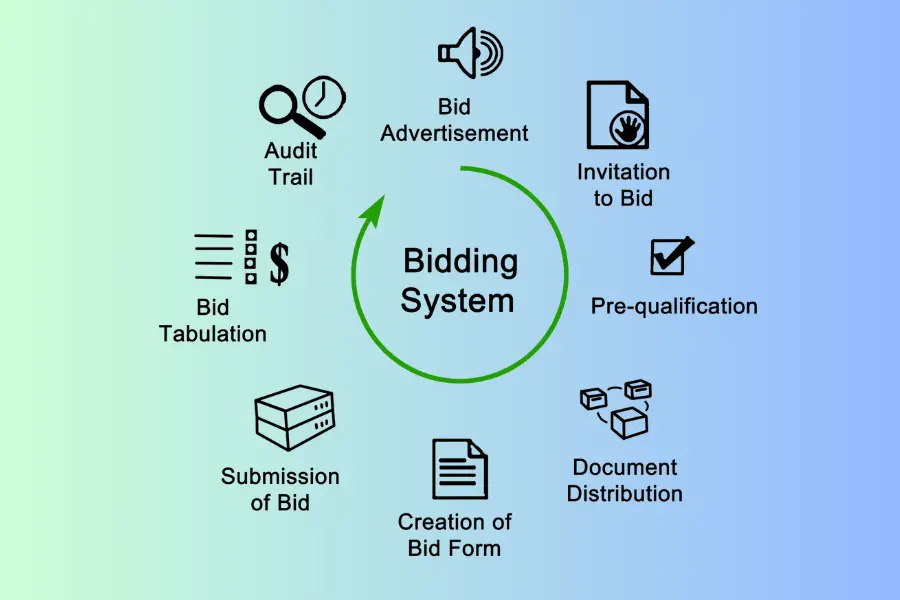Examine Google's Ad Auction System and Real-Time Bidding Strategies
Google's ad auction system and real-time bidding (RTB) strategies are fundamental to its advertising ecosystem, enabling efficient and targeted ad placements across its platforms. Here’s an in-depth look at how these systems work and their impact on digital advertising.

1. Google's Ad Auction System
Google’s ad auction system is designed to place ads in the most relevant positions on its search engine results pages (SERPs) and across its network. The key components include:
- Ad Rank: determines the position of an ad on the SERP. It is calculated based on several factors:
- Bid Amount: The maximum amount an advertiser is willing to pay for a click.
- Quality Score: A measure of the quality and relevance of the ad, including factors like click-through rate (CTR), ad relevance, and landing page experience.
- Expected Impact of Extensions and Formats: The performance impact of ad extensions and other ad formats.
- Quality Score Components:
- Expected CTR: Predicted probability of the ad being clicked.
- Ad Relevance:How closely the ad matches the user’s search intent.
- Landing Page Experience: The relevance and quality of the landing page that the ad directs to.
- Auction Process:
- User Search:A user enters a query into Google’s search engine.
- Ad Auction:Google’s system conducts an auction among the eligible ads for that query.
- Ad Rank Calculation:Each ad’s rank is calculated based on the bid amount, quality score, and expected impact of ad extensions.
- Ad Placement:Ads are placed on the SERP based on their Ad Rank, with higher-ranked ads appearing in more prominent positions.
- Ad Inventory
- Bid Request
- Bid Response
- Auction and Ad Serving
2. Real-Time Bidding (RTB)
RTB is a programmatic advertising technique that allows advertisers to bid in real-time for ad impressions. It is a key component of Google’s Display Network and involves the following steps:
Publishers provide ad inventory, which is made available on ad exchanges.
When a user visits a webpage, a bid request is sent to multiple potential advertisers, providing information about the user and the available ad space.
Advertisers evaluate the bid request and respond with their bids based on the value they assign to that impression.
The highest bid wins the auction, and the corresponding ad is served to the user in real-time.
3. Strategies for Optimising Ad Performance
Advertisers can optimise their strategies within Google’s ad auction and RTB frameworks by focusing on several key areas:
- Bid Management: Adjusting bids to balance cost-efficiency and competitive positioning. Automated bidding strategies, such as Target CPA (Cost Per Acquisition) and Target ROAS (Return on Ad Spend), help optimise bids dynamically.
- Quality Score Improvement: Enhancing ad relevance, improving CTR, and ensuring a high-quality landing page experience to boost Quality Scores and improve Ad Rank.
- Ad Extensions: Utilising ad extensions (e.g., sitelinks, callouts, structured snippets) to enhance ad visibility and expected impact.
- Audience Targeting: Leveraging Google’s audience data to target specific demographics, interests, and behaviours, improving the relevance and performance of ads.
- A/B Testing: Continuously testing ad variations to identify the most effective ad creatives and formats.
- Landing Page Optimization: Ensuring landing pages are relevant, fast-loading, and provide a good user experience to maximise conversions and Quality Scores.
4. Impact on Digital Advertising
Google’s ad auction system and real-time bidding strategies have significantly impacted the digital advertising landscape:
- Efficiency: Automated bidding and real-time auctions streamline the ad buying process, reducing manual effort and increasing efficiency.
- Targeting Precision: Advanced targeting capabilities allow advertisers to reach highly specific audiences, improving ad relevance and campaign performance.
- Competitive Marketplace: The auction-based model fosters a competitive environment, ensuring that ad placements are based on merit and value rather than budget alone.
- Performance Measurement: Detailed analytics and performance metrics enable advertisers to track and optimise their campaigns effectively.
Google’s ad auction system and real-time bidding strategies are at the core of its advertising platform, driving efficiency, precision, and competitiveness in digital advertising. By understanding and leveraging these systems, advertisers can enhance their ad performance, reach their target audiences effectively, and achieve their marketing goals.
Active Events
Your Data Science Career Game-Changing in 2024: Explore Trends and Opportunities
Date: May 2, 2025 | 7:00 PM (IST)
7:00 PM (IST) - 8:10 PM (IST)
2811 people have registered
Data Scientist Challenges One Should Avoid
Date: April 29, 2025 | 7:00 PM (IST)
7:00 PM (IST) - 8:10 PM (IST)
2753 people have registered
Bootcamps
Data Science Bootcamp
- Duration:8 weeks
- Start Date:October 5, 2024
Full Stack Software Development Bootcamp
- Duration:8 weeks
- Start Date:October 5, 2024
